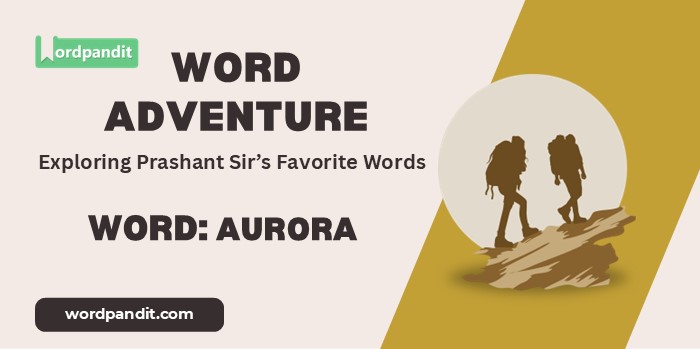Word Adventure: Aurora
The Headline
“Aurora: Nature’s Light Show Dancing in the Night Sky”
The Scoop
In the grand theater of natural phenomena, some displays are so breathtaking they seem almost magical. ‘Aurora’ is the word that captures one of nature’s most mesmerizing performances – the ethereal lights that dance across polar skies. Join me as we explore this enchanting term that bridges scientific precision with poetic beauty.
Let’s Break It Down
The Plot Thickens
The story of ‘aurora’ begins in ancient Rome with a goddess who rode across the morning sky in a chariot, bringing light to the world. Aurora, the goddess of dawn, lent her name to this atmospheric phenomenon because early observers noted similarities between the rosy colors of dawn and the pink-tinged displays in the night sky.
Today, we recognize auroras as ‘aurora borealis’ (Northern Lights) and ‘aurora australis’ (Southern Lights). The scientific explanation involves solar wind particles colliding with Earth’s magnetic field and atmosphere, creating a spectacular light show. Yet despite our understanding of the physics involved, auroras continue to inspire the same sense of wonder that led our ancestors to associate them with divine presence.
The term has also evolved beyond its atmospheric meaning. In fields ranging from photography to botany, ‘aurora’ describes things that share qualities with the celestial lights – whether it’s the gradual brightening of a photograph or the vibrant colors of a flower.
Word in the Wild
The Twist
Here’s a fascinating aspect of auroras: they’re not unique to Earth! Scientists have observed auroral displays on other planets in our solar system, including Jupiter and Saturn. These extraterrestrial auroras can be even more spectacular than Earth’s, with Jupiter’s auroras being hundreds of times more powerful. This reminds us that what we consider a uniquely earthly experience is actually a cosmic phenomenon!
Make It Stick
Aurora: Where solar winds paint the night with nature’s neon lights!
Your Turn
Have you ever witnessed an aurora? Whether you’ve seen one in person or through photographs, what impressed you most about this natural light show? Share your aurora experiences or aurora dreams in the comments below. Let’s explore how these celestial displays capture our imagination!
Down the Rabbit Hole
- Curious about the science? Explore terms like ‘solar wind’, ‘magnetosphere’, and ‘particle excitation’.
- Interested in aurora mythology? Research how different cultures have interpreted these lights, from the Sami to the Maori.
- Want to photograph auroras? Learn about night photography, long exposures, and the best locations for aurora viewing.
The Last Word
As we conclude our exploration of ‘aurora’, I hope you’ve gained an appreciation for this word that captures one of nature’s most spectacular displays. It reminds us that sometimes the most scientific phenomena can also be the most magical. The next time you hear about the Northern Lights dancing in the sky, remember – you’re not just witnessing a physical process, you’re experiencing an aurora! Until our next word adventure, this is Prashant from Wordpandit, encouraging you to look up and wonder at the marvels above!












